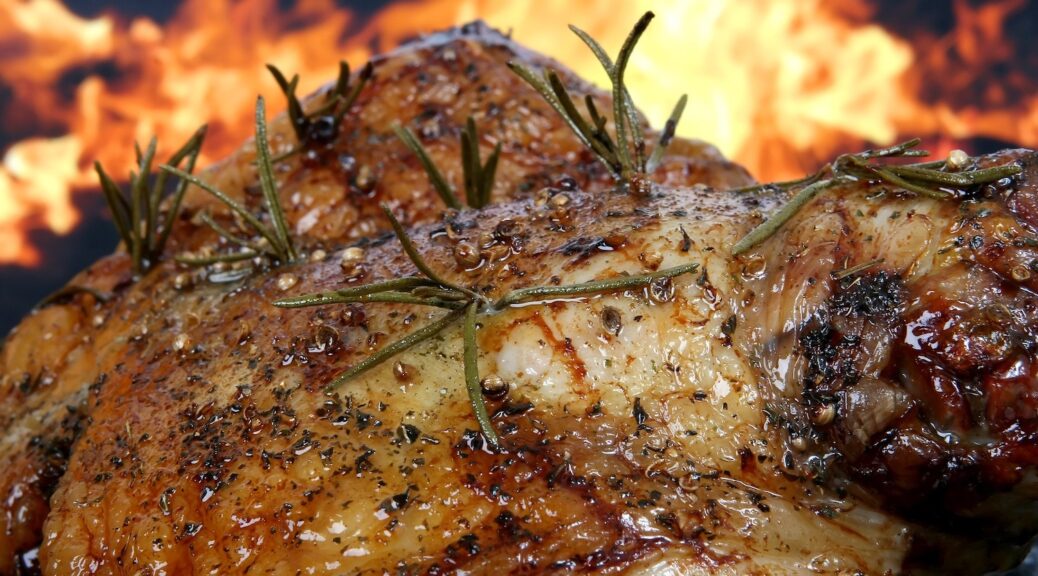
Roasting Meat in an Open Hearth Fireplace
Years ago, meats were roasted in an open hearth, in FRONT of the fire, not over the fire like when cooking outdoors.
Roasting was a skill learned through practice. Cooks learned to build a clear, brisk, and steady fire. It was quite an accomplishment to cook a joint with a nice crust on the outside, yet tender and juicy inside.
INFORMATION BELOW FROM 1800s COOKBOOKS
~ Roasting is done before the fire, and should not be confused with baking, which is done in the oven. There is nearly as much difference between roasted and baked meat as there is between broiled and fried meat.
~ Bear in mind that no one can broil or roast in an oven, whatever be its construction, its process of heating, or its kind of heat. An object cooked in an oven is baked.
~ Roasted meats have a distinctly better flavor than baked ones. The latter are likely to taste of smoke unless the oven is frequently opened for basting, as few of them are sufficiently ventilated to free them of smoke and steam. Baking is the method generally employed in small households.
~ That peculiar flavor in roasted meat is produced by the air coming constantly in contact with the heated meat while revolving on the spit. When the meat is placed on the spit to roast, remember that it cannot be basted too often.
~ Broiling and roasting are the same thing. The meat must be exposed to the heat on one side, and the other side to the air.
~ Whatever you broil, grease the bars of the gridiron first. It is better to broil before than over the fire. In broiling before the fire, all the juice can be saved.
~ The success of every method of cooking depends largely upon the correct management of the fire. In roasting, this is particularly the case, as a clear, brisk and yet steady fire is needed.
========================================
HOW TO ROAST
To roast a joint, place it before great heat for the first ten minutes and then allow it to cook more slowly. The great heat hardens the outside of the meat and keeps in the juices. If allowed to cook quickly all the time, the meat is likely to be tough. The joint should be basted about every ten minutes, as this helps to cook it, keeps it juicy, and improves the flavor. The time allowed is fifteen minutes for every pound, plus twenty minutes over for beef and mutton. For veal and pork, twenty minutes for every pound and thirty minutes over.
In warm weather, joints require slightly less time for roasting than in cold.
Boned and rolled or stuffed meats require longer cooking than the same joints would if neither rolled nor stuffed. Meat of newly killed animals requires longer cooking than meat which has been hung for a time. Meat such as pork, veal, and lamb, always should be well cooked and never must be served rare.
Till some culinary philosopher shall invent a thermometer to ascertain the heat of the fire, and a graduated spit-rack to regulate the distance from it, the process of roasting must remain among those which can only be performed well by frequent practice and attentive observation.
Be very careful to place the dripping-pan at such a distance from the fire as just to catch the drippings. If it is too near, the ashes will fall into it, and spoil the drippings (which will occasionally be found an excellent substitute for butter or lard).
If it is too far from the fire to catch them, you will not only lose your drippings, but the meat will be blackened and spoiled by the smoke, which will arise when the fat falls on the live cinders.
When the joint is half done, move the spit and dripping-pan back, and stir up your fire thoroughly, that it may burn clear and bright for the browning. When the steam begins to arise, it is a proof that the whole joint is thoroughly saturated with heat. Any unnecessary evaporation is a waste of the best nourishment of the meat. When the steam from the meat draws towards the fire, it is a sign of its being done enough.
When cold roasted meat is desired to be served warm, envelop it in buttered paper and placed on the spit just long enough to warm it.
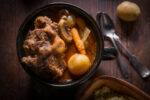
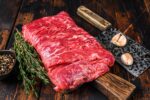
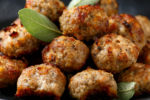
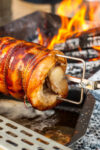
3 thoughts on “Roasting Meat in an Open Hearth Fireplace”
MMMM! Sounds delicious! But I am glad I don’t have to cook over a fire.
Can you imagine how much work it was to bring in wood, build a fire, keep in going, and then clean out the ashes? That’s in addition to the actual cooking.
but the flavor would be worth the effort